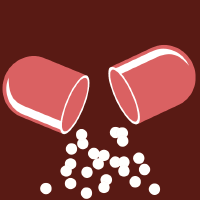
Antibiotics, Vol. 9, Pages 175: Is Blood a Good Indicator for Detecting Antimicrobials in Meat? Evidence for the Development of In Vivo Surveillance Methods
Antibiotics doi: 10.3390/antibiotics9040175
Authors:
Serrano
Mitjana
Bonastre
Laborda
Falceto
García-Gonzalo
Abilleira
Elorduy
Bousquet-Melou
Mata
Condón
Pagán
The introduction of antimicrobial residues in the food chain has a significant impact on human health. An innovative solution to avoid their presence in meat is the adaptation of current control methods for use with in vivo matrixes. Thus, the aim was to obtain paired blood and muscle samples from pigs treated with some of the main antimicrobials currently used in veterinary medicine (oxytetracycline, sulfamethoxypyridazine, enrofloxacin, amoxicillin), and to compare their rate of depletion in both matrixes. Antimicrobial concentrations in paired samples of blood and muscle were determined by liquid chromatography with tandem mass spectrometry (LC–MS/MS) or high performance liquid chromatography with fluorescence detection (HPLC-FLD). A comparison between values obtained in muscle and blood showed a similar distribution in both matrixes for oxytetracycline; for sulfamethoxypyridazine, a similar decrease rate but a concentration three times higher in blood compared to muscle was found; for enrofloxacin, we found significant differences in the rate of depletion, with similar antimicrobial concentrations in both matrixes with values close to the maximum residue limit (MRL) and higher amounts in muscle for values that lay considerably over the MRL. Conversely, amoxicillin depletion was so rapid that its appearance in carcasses does not seem to pose a risk. Therefore, blood would be a feasible matrix for the development of new in vivo tests.

Δεν υπάρχουν σχόλια:
Δημοσίευση σχολίου